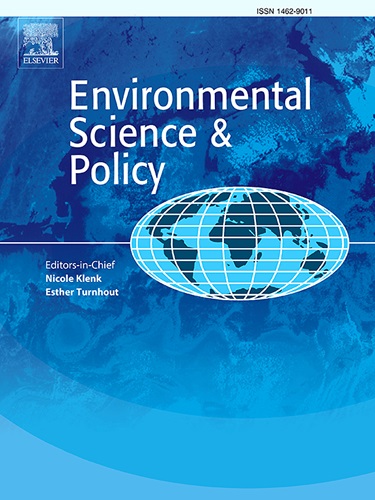Identifying leverage points for sustainable transitions in urban – rural systems: Application of graph theory to participatory causal loop diagramming
IF 4.9
2区 环境科学与生态学
Q1 ENVIRONMENTAL SCIENCES
引用次数: 0
Abstract
Socio-ecological systems are vital for integrated urban and rural environments. Causal loop diagrams (CLDs) help identify system connections and future planning and policy interventions. This article applies graph theory to the assessment of a CLD of the Food – Energy – Water nexus in integrated urban – rural regions, drawn within a participatory modeling effort with domain experts. We applied well-known measures and developed a new method that considers the loop-based structure of the system. The loop-based structure complements well-established node- and network-based metrics by identifying hidden leverage points that may play a crucial role in disseminating systemic change. Our multi-method approach allows us to identify the most transformative lever points, distinguishing between initiators (e.g., non-commodity local food products, urbanization, and local budgets) from reinforcers of change capable of cementing these transitions by bridging across the system (e.g., climate activism, recreational space, and water pollution). Our analysis confirms some insights derived through the conversations shaping and shaped by the collaborative causal loop diagramming. With our approach, we also find that some policies, while popular in the literature and professional circles, may not be transformative due to their location within the interconnected system. Our approach thus strengthens the contribution of participatory CLD processes to complex problem-solving and policy design.
确定城乡系统可持续转型的杠杆点:图论在参与式因果循环图中的应用
社会生态系统对于城乡一体化环境至关重要。因果循环图(cld)有助于确定系统连接、未来规划和政策干预。本文将图论应用于综合城乡地区食物-能源-水关系的CLD评估,该CLD是在与领域专家的参与式建模工作中绘制的。我们采用了众所周知的测量方法,并开发了一种考虑系统环基结构的新方法。基于循环的结构通过识别可能在传播系统性变化中发挥关键作用的隐藏杠杆点,补充了已建立的基于节点和网络的指标。我们的多方法方法使我们能够确定最具变革性的杠杆点,区分发起者(例如,非商品当地食品,城市化和地方预算)和能够通过跨系统连接巩固这些转变的变化强化者(例如,气候行动主义,娱乐空间和水污染)。我们的分析证实了通过协作因果循环图塑造和塑造的对话得出的一些见解。通过我们的方法,我们还发现,一些政策虽然在文学和专业领域很受欢迎,但由于它们位于相互关联的系统中,可能不会具有变革性。因此,我们的方法加强了参与式CLD进程对复杂问题解决和政策设计的贡献。
本文章由计算机程序翻译,如有差异,请以英文原文为准。
求助全文
约1分钟内获得全文
求助全文
来源期刊

Environmental Science & Policy
环境科学-环境科学
CiteScore
10.90
自引率
8.30%
发文量
332
审稿时长
68 days
期刊介绍:
Environmental Science & Policy promotes communication among government, business and industry, academia, and non-governmental organisations who are instrumental in the solution of environmental problems. It also seeks to advance interdisciplinary research of policy relevance on environmental issues such as climate change, biodiversity, environmental pollution and wastes, renewable and non-renewable natural resources, sustainability, and the interactions among these issues. The journal emphasises the linkages between these environmental issues and social and economic issues such as production, transport, consumption, growth, demographic changes, well-being, and health. However, the subject coverage will not be restricted to these issues and the introduction of new dimensions will be encouraged.
 求助内容:
求助内容: 应助结果提醒方式:
应助结果提醒方式:


